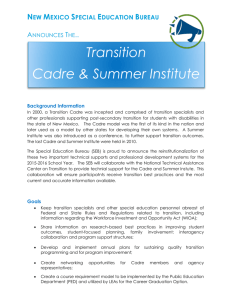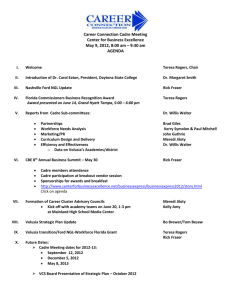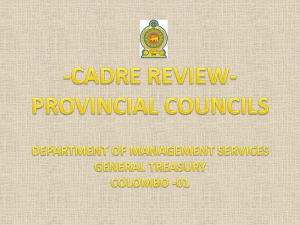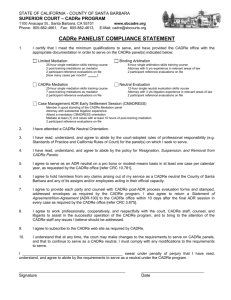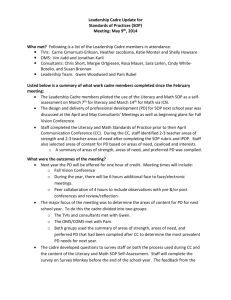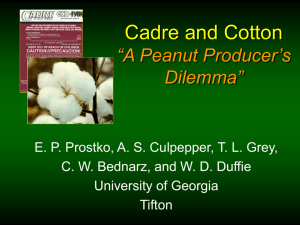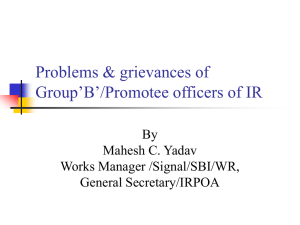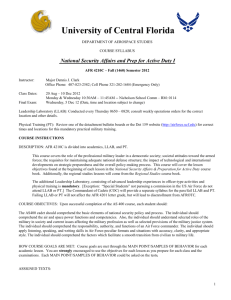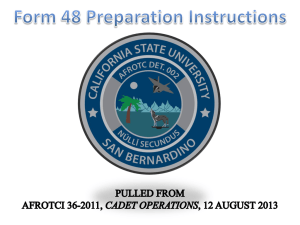Brief Introduction to Computer Aided Negotiations
advertisement
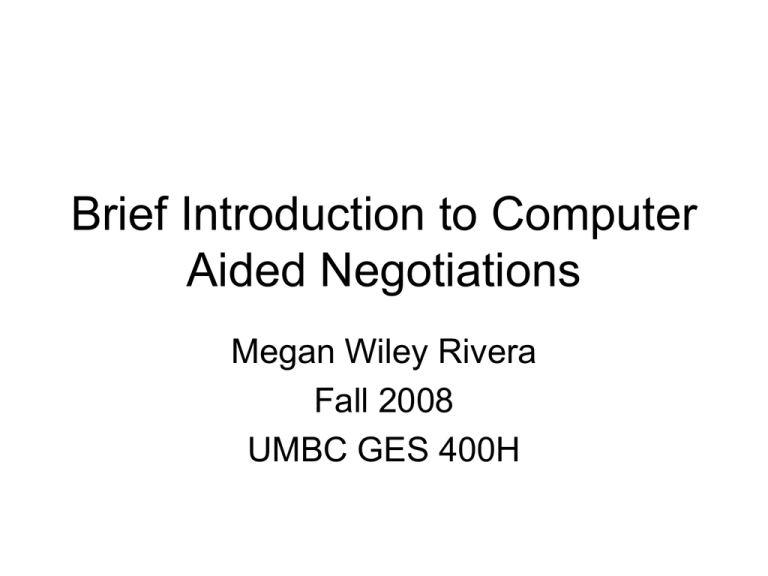
Brief Introduction to Computer Aided Negotiations Megan Wiley Rivera Fall 2008 UMBC GES 400H We haven’t even agreed on “CADRe” Note: name changed to Collaborative Modeling for Decision Support in 2010 From Werick, W. What I do, how I do it and why. Computer Aided Dispute Resolution: Proceedings from the CADRe Workshop. 2007 The practice is not new, the field is • Computer models have been used in water disputes since the early 1980s • We are now defining terms to come together, share ideas, and strengthen our presence in field of water resources • What makes CADRe, CADRe? See Stephenson, K. and Shabman, L. Overview of Computer Aided Dispute Resolution: Approach and Evaluation. Computer Aided Dispute Resolution: Proceedings from the CADRe Workshop. 2007 When does a process count as CADRe? From Sheer, D.P. A Process for CADRe and Requirements for Tools to Support CADRe. Computer Aided Dispute Resolution: Proceedings from the CADRe Workshop. 2007 Potomac was one of the first From Palmer, R.N. Shared Vision Planning: A Personal Perspective. Computer Aided Dispute Resolution: Proceedings from the CADRe Workshop. 2007 An aside: more is not always the answer • A LOT can be done with management • It is very difficult and expensive to build large reservoirs now • More storage means more to fill • Groundwater often limited • For this class, more is not an option (we are not adding additional storage to system) Some examples of SVP • • • • • • • ACT-ACF Basin Boston Metro Study Cedar and Green Rivers Gila River James River Kanawha River Lake Onterio-St Lawrence River • Rappahannock River • Snake Plan Aquifer • Pacific Northwest Climate Change • Lake Powell/Lake Mead • Los Angeles • Marais des Cygnes – Osage • Middle Rio Grande • Mississippi Headwaters • Potomac River • Northern CA • Susquehanna River • Upper Rio Grande River • Willamette River Some examples of CAN Computer Aided Negotiations 1. Develop performance measures 2. Reach consensus on • • • the scientific data to be used in evaluating alternatives scientific methods and assumptions to be used the nature of alternatives to consider and how to structure the evaluations 3. Create and evaluate alternatives in a collaborative setting with other stakeholders
